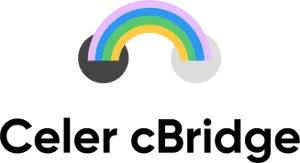
Layerswap
Layerswap is a cross-chain bridging solution enabling token swaps across 71 blockchain networks.
Overview
Layerswap is a blockchain infrastructure company focused on providing seamless cross-chain token bridging and swapping services. It supports transfers across 71 different blockchain networks, enabling developers and users to move assets efficiently between diverse ecosystems. The platform offers an API-first approach, allowing integration of cross-chain swaps into third-party applications with minimal effort. This makes it suitable for infrastructure teams, DeFi projects, and financial institutions seeking to add multi-chain interoperability to their products.
The core functionality of Layerswap is its API that monitors source network transactions and automatically executes corresponding swaps on the destination chain. It supports real-time status updates via webhooks and provides detailed swap lifecycle management. Developers can quickly get started using the provided SDK starter kit, Postman collections, and comprehensive API documentation. The platform also offers a hosted swap page and customizable embedded forms for easy UI integration.
What sets Layerswap apart is its extensive chain coverage combined with a developer-friendly API and tooling ecosystem. Unlike many bridges that focus on a handful of chains, Layerswap’s support for 71 networks offers broad interoperability. Its API-centric design enables backend and frontend integration flexibility, while webhook notifications facilitate real-time swap tracking. This makes it a practical choice for projects requiring reliable, scalable cross-chain asset transfers without building complex bridging infrastructure from scratch.
The Problem
Cross-chain asset transfers are complex due to fragmented blockchain ecosystems and lack of unified bridging infrastructure. Developers face challenges integrating multiple bridges with inconsistent APIs and limited chain support, resulting in poor user experience and operational overhead.
The Solution
Key Features
Swap Lifecycle Management
Monitors source transactions and triggers corresponding destination swaps with status tracking.
Webhook Notifications
Delivers real-time swap status updates to partner-specified URLs for event-driven workflows.
Hosted and Embedded UI Options
Offers customizable hosted pages and embedded forms for easy user-facing integration.
Key Strengths
How Developers Use Layerswap
Integrate Cross-Chain Swaps into DeFi Platforms
DeFi developers use Layerswap API to enable users to swap tokens across multiple chains without leaving their app.
Enable Multi-Chain Asset Transfers for Wallets
Wallet providers integrate Layerswap to offer seamless cross-chain token transfers within their user interface.
Financial Institutions Facilitating Cross-Chain Payments
Institutions leverage Layerswap’s API to automate cross-chain asset movements for payment and settlement workflows.
Works Well With Ethereum
Ethereum Starknet
Starknet Fuse
Fuse Metis
Metis Aurora
Aurora BNB Smart Chain
BNB Smart Chain Celo
Celo Arbitrum One
Arbitrum One Optimism
Optimism Fantom
Fantom Aptos
Aptos Solana
Solana Sui
Sui Base
Base Moonbeam
Moonbeam Gnosis
Gnosis















Power your next build
Discover trusted tools and services in the QuickNode Marketplace. Everything you need to launch faster and scale smarter.
Layerswap Alternatives
Explore web3 competitors and apps like Layerswap.

Allbridge Core
A cross-chain bridge focused on native stablecoin transfers using liquidity pools for fast, secure token swaps without wrapping.

Celer cBridge
A multi-chain, cross-layer asset bridge offering instant transfers with low fees and zero trust.

Synapse Protocol
Synapse is an interchain messaging protocol and cross-chain bridge enabling decentralized applications to operate across multiple blockchains.

Orbiter Finance
Orbiter Finance is a zero-knowledge technology-based Ethereum acceleration engine that enables fast, affordable, and secure bridging and swapping of crypto assets across multiple blockchain ecosystems.

Superbridge
Superbridge is a native bridging solution enabling asset transfers between Ethereum and various rollups.

Hop
Hop Protocol enables fast, secure, and low-cost token transfers across Ethereum Layer 2 networks.

Stargate Finance
Stargate is an omnichain liquidity protocol enabling seamless, secure asset transfers across 80+ blockchains.
Pricing
Custom | |
|---|---|
| Price (Monthly) | Custom pricing |
| Price (Annual) | Custom pricing |
| Messaging | N/A |
| Support | Custom enterprise support available |
| Analytics |
Resources
Layerswap provides extensive developer resources including API documentation, SDK starter kits, Postman collections, and example integrations to facilitate quick onboarding and smooth integration of cross-chain swaps.
